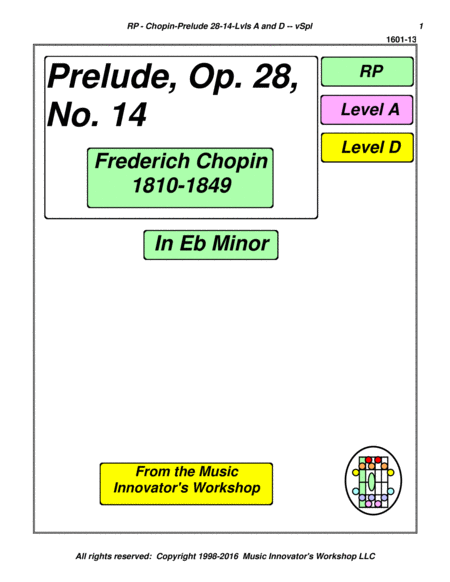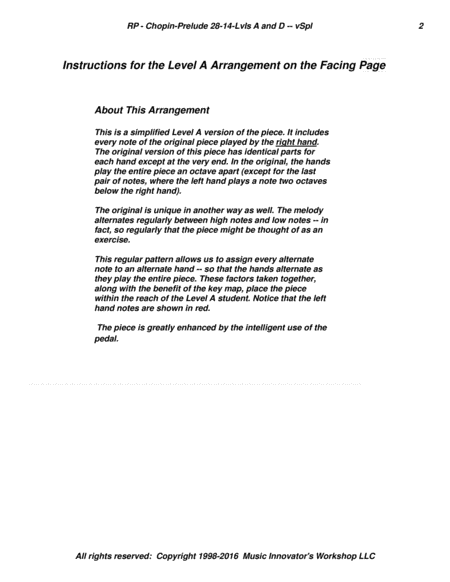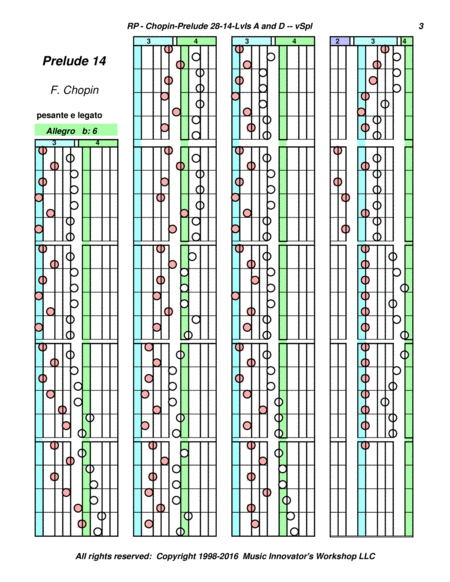Chopin - Prelude - Opus 28, No. 14 - (Key Map Tablature)
 Instant Download
Instant Download
Details
Description
SKU: A0.984719
Composed by Frederic Chopin. Arranged by John M. Honeycutt. Romantic Period. Score. 6 pages. Music Innovators Workshop #4359399. Published by Music Innovators Workshop (A0.984719).This incredibly difficult-to-read piece is tamed by the key maps tablature. The traditional notation for this piece is at the extreme of its ability to notate piano music - and it fails miserably! It is playable only by the gifted few who have the tenacity to race through reading this incredibly fast 6 flat Eb minor notation. with its additional double flats and accidentals, some of which must be played on white keys. Surely the piece must be some kind of joke - Chopin's way of thumbing his nose at those bold enough to try to play it. It surely is NOT the great music that Chopin usually crafted.
The joke is that it is not really difficult to play. It is just incredibly difficult to READ! The music can be played, although without its breakneck speed, by students at the intermediate level if reading from a key map. This piece is an extreme example of how much easier playing from key maps can be.
This piece is notated on a vertically oriented tablature called a "key map." Key maps are intended to SHOW you (visually) which keys to play by matching (mapping) the locations of the keys on the keyboard. >>> The group of 12 keys from Middle C up to B form what we call the green "Octave Group". (There are 7 of these identical groups on the piano distinguished by their colors and locations.)
This product was created by a member of ArrangeMe, Hal Leonard’s global self-publishing community of independent composers, arrangers, and songwriters. ArrangeMe allows for the publication of unique arrangements of both popular titles and original compositions from a wide variety of voices and backgrounds.
Digital Downloads are downloadable sheet music files that can be viewed directly on your computer, tablet or mobile device. Once you download your digital sheet music, you can view and print it at home, school, or anywhere you want to make music, and you don’t have to be connected to the internet. Just purchase, download and play!
PLEASE NOTE: Your Digital Download will have a watermark at the bottom of each page that will include your name, purchase date and number of copies purchased. You are only authorized to print the number of copies that you have purchased. You may not digitally distribute or print more copies than purchased for use (i.e., you may not print or digitally distribute individual copies to friends or students).



 Share
Share